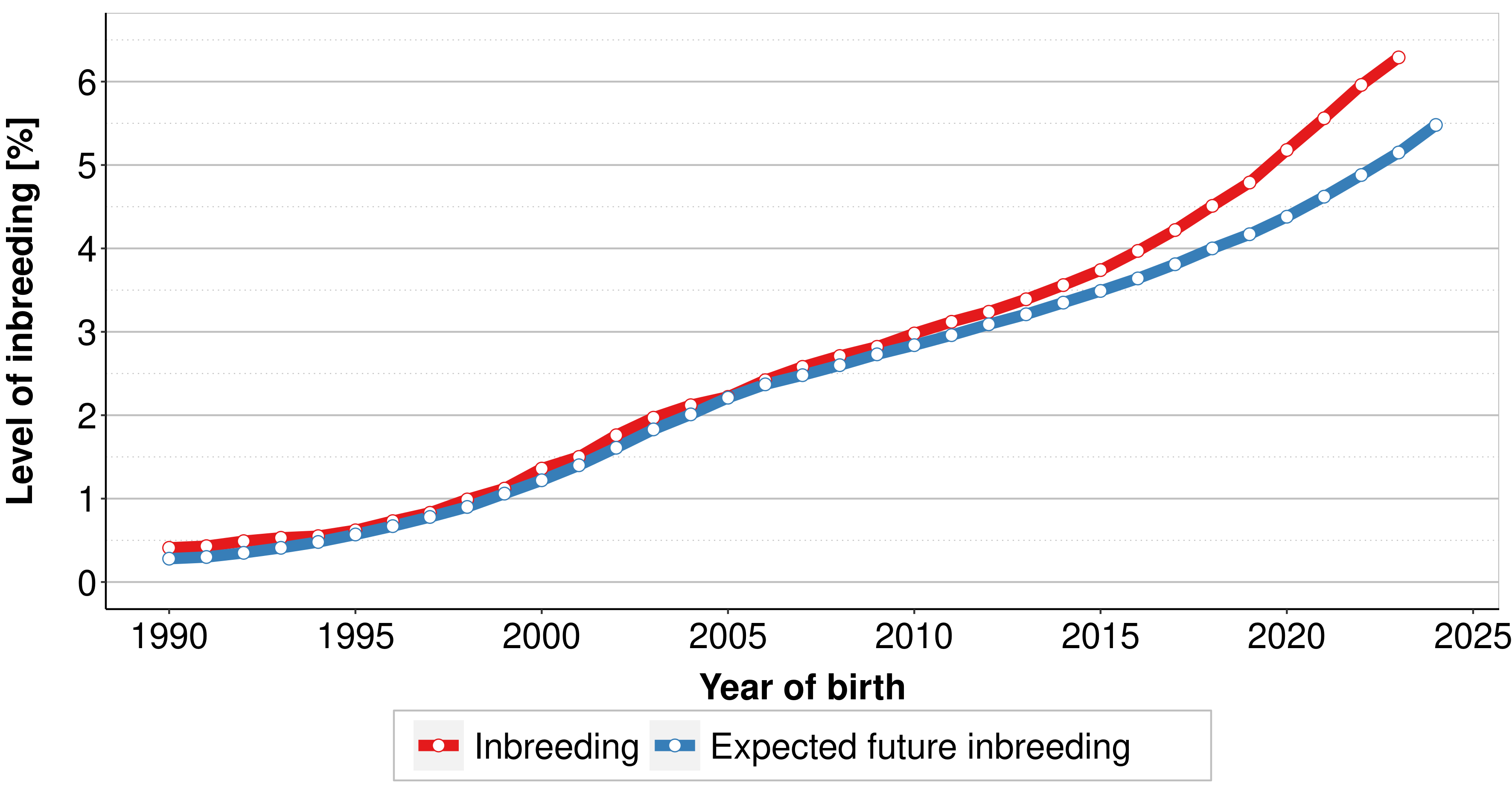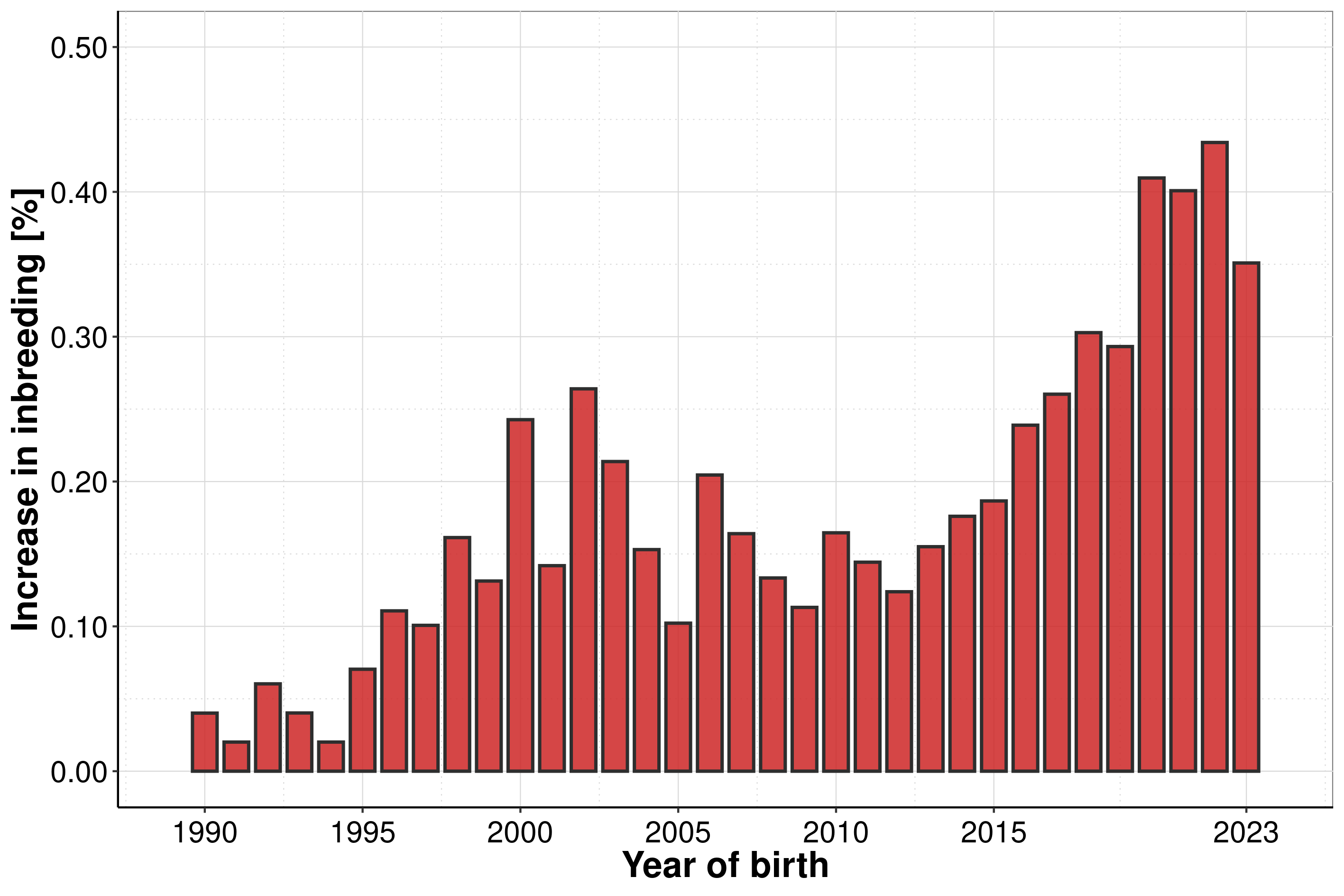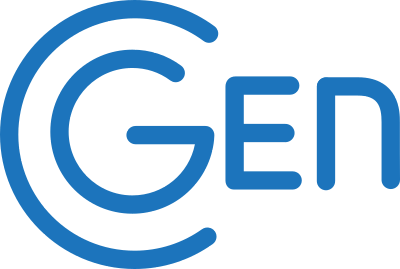Holsteins are under strong selection pressure, which result in impressive genetic progress. At the same time the genetic diversity is decreasing. An increase in the inbreeding rate per year is observed, it’s increase in recent years is associated with the introduction of genomic selection. This phenomenon has negative consequences because it leads to an increased occurrence of mating (highly) related individuals. The more closely related individuals are, the more likely are to pass genes to their offspring from their common ancestor. The level of inbreeding manifested as inbreeding depression reduces the health, productivity and vitality of animals.
Inbreeding is defined as mating of the related individuals. Inbred is a measure of the individual’s homozygosity level so inherited genes by the individual from its father and mother from the common ancestor of both parents.
The other parameter is expected future inbreeding which is defined as the expected inbreeding level of future offspring, as a consequence of meetings the reproductively active bulls with available cows and heifers.
Centre for Genetics estimates:
Analyses are performed weekly to include as soon as possible newly registered individuals.
The average inbreeding level of the Polish Holstein-Friesian cows in 2023 was 6.29% and it was 1.14% higher than the expected future inbreeding of offspring prognosed in 2023 (Figure 1). Which means that breeding decisions related to the selection of animals for mating cause an increase inbreeding greater than at random selection. The expected future inbreeding describes the relationship of bulls with the population of reproductively active cows and heifers. The average expected future inbreeding of offspring in 2024 was 5.48%.

The level of inbreeding in Polish Holstein-Friesian cows
An important indicator is not only the inbreeding level, but its increase. Figure 2 shows the average increase in inbreeding in a given birth year of cows. The increase in inbreeding in 2023 compared to 2022 was + 0.35% higher. In the last 10 years a steady increase in inbreeding can be observed.

